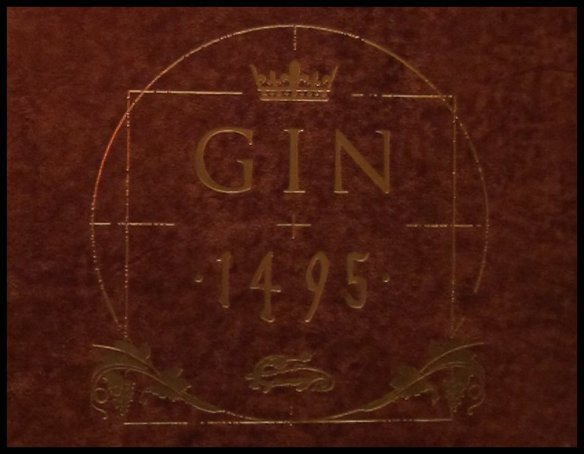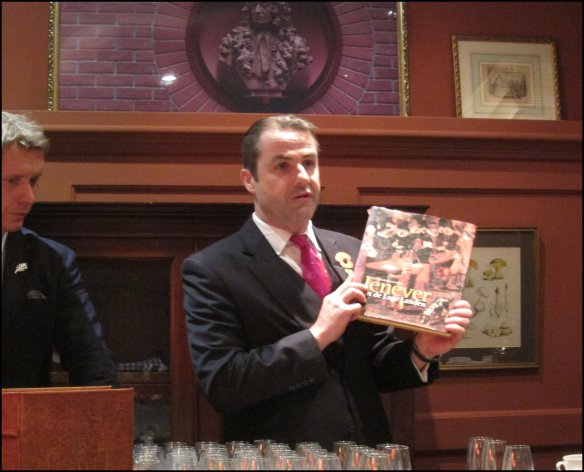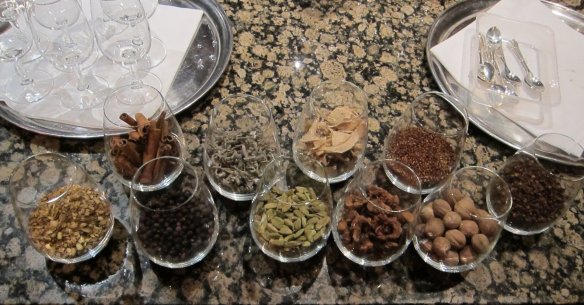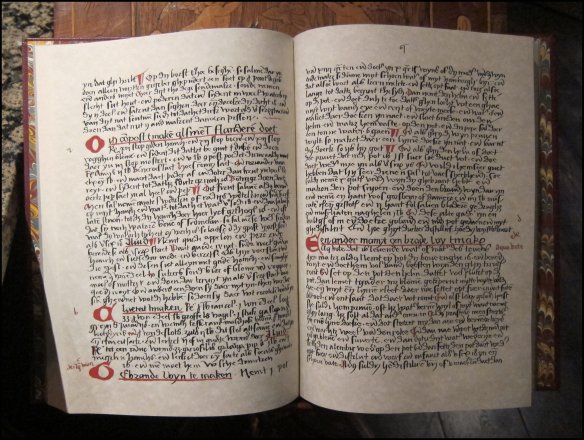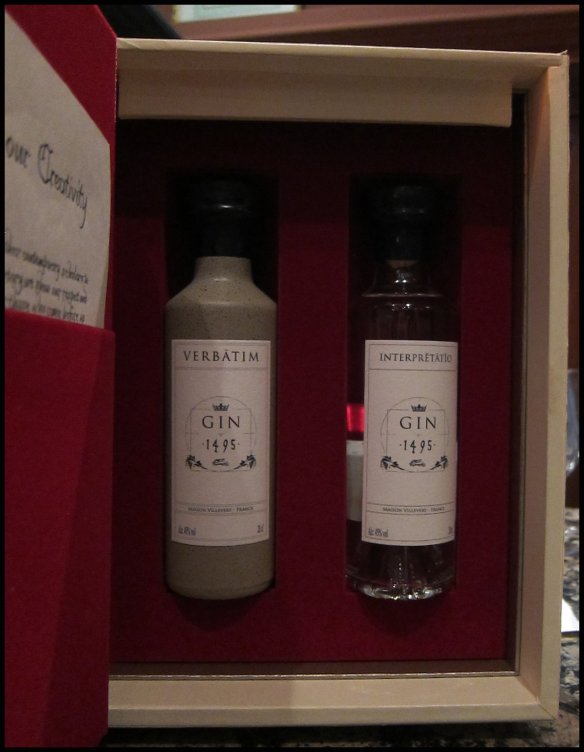Gin1495 – Discovering the World’s Oldest Gin recipe
Contributed by on Nov 07, 2014
One reader loves this post.
Many gins pride themselves on the provenance and history of their recipes; such examples include: Greenalls/Bombay Dry (1761), Haymans Old Tom (1860s), and Diplôme (1945). As great as these spirits are, their antiquity pales in comparison to the gin I tried on Tuesday, which is based on a recipe first written over 500 years ago.
Gin 1495 is a grape-based gin made using a recipe that was discovered by Philip Duff after it was referenced in an out-of-print book on Jenever. Philip followed this lead, discovering that the text from a 1495 cookbook from a merchant’s house in the East Netherlands, a part of the collection of Sir Hans Sloane, and that the manuscript itself was housed in British Library.
Philip Duff – an the first clue to tracking down the ancient recipe.
In collaboration with spirits experts and historians, Dave Broom, David Wondrich and gaz regan, and with the knowledge, experience, and facilities of Jean-Sébastien Robicquet, founder of EWG Spirits & Wine, the team set about recreating a gin from the recipe.
Botanicals used in the gin include: nutmeg (which, in 1495, was worth more than its weight in gold), ginger, galangal, seed (grains) of paradise, cloves, cinnamon, cardamom, sage, and juniper. The spice trade was not yet well-established, with the East India companies not being founded until 1600 and 1602. As such, the spices would have come from an individual trader travelling the silk route. The recipe states to use one part botanicals to nine parts wine distillate.
The botanicals used in the gins
Distillation of spirits, which became recreational some time between 1351 and 1495, relied heavily on wine as a spirit base; this was due to the greater simplicity in making spirit from grape. Tensions, hostility, and wars across Europe meant that the availability of quality grapes declined, and so local distillers switched to making their spirit from local grain.
Whilst the exact variety of grape used originally is not known, it is likely that it would have been Ugni Blanc (other, less likely, options include Folle blanche and Colombard) and thus that is what is used in the re-creation gin.
Two varieties of Gin 1495 have been released: the Verbatim, a recreation as close to the original as possible; and the Interpretatio, which is inspired by the original recipe, but also includes botanicals that are available today, but were not then.
A specially commissioned hand-drawn replica of the original text
The Taste
Gin 1495 #1 Verbatim (42.0% ABV)
Nose: Dry nutmeg and sage. Herbal, with a touch of pine and plenty of spice, including aromatic cardamom, ginger, clove, and some waxy, woody notes.
Taste: Very bold flavours and exceptionally dry (it was explained that the only sweetness in a European diet at the time would come from honey). There are notes of pine needles and other green, herbal notes, as well as hints of dark treacle. The spirit is sappy and has a great depth of flavour.
Adding a touch of water, the gin louches (goes cloudy) due to its high oil content, and the oily texture is more pronounced. There is a long, lingering finish with a touch of salty brine and menthol pepper notes from the grains of paradise.
Gin 1495 #2 Interpretatio (45.0% ABV)
This version was made using more juniper, citrus, and the addition of angelica.
Nose: Big, strong juniper with a slightly oaty note. Pine with citrus, and some sweet, spicy notes.
Taste: Plenty of anise and fennel-like notes upfront, then a fair bit of clovey citrus. There is a funky forest-floor element, too, although this is not unpleasant and mixes well with the gin’s berry and violet notes. The angelica root adds dryness to the juniper flavour.
The texture is full and oily, with spice coming through at the end: cardamom and ginger, with some more cloves. This intense spice lingers on the finish.
The gins are packaged in book-style presentation boxes and only 100 sets were produced. These are not for sale, but will be donated to various museums, spirits collections, archives, and gin institutions around the world, including the Museum of the American Cocktail, the Diageo Archive, and the gin archive at Laverstoke Mill.
In association with The Gin Guild, one set will be auctioned (details below), with the proceeds going to The Benevolent: a charity for members of the drinks community in times of need.
In Conclusion
The 1495 Gin project is one of the most exciting things to have happened in the World of Gin and this altruistic motivation is to be applauded. It was a privilege to be able to attend the launch and experience and taste the two gins.
As a final thought, I am intrigued by the similarity between the character of a gin made from a 500 year old recipe and some of the modern and contemporary “Alpine Gins” being released by new small distilleries in Germany, Austria, and across Europe. Sometimes history really does repeat itself.
Gin 1495 Auction Process
Bids must be made via the dedicated e-mail 1495GINBID@gmail.com. All bids must be made in pounds sterling and sent along with a name and contact telephone number. Bidding closes on 1st December 2014.

